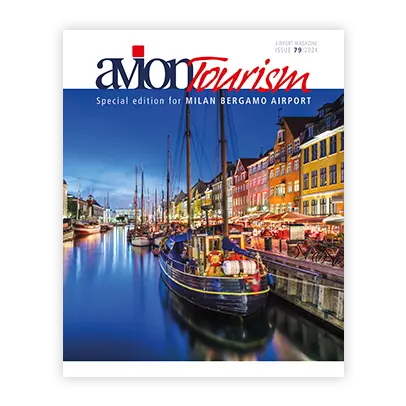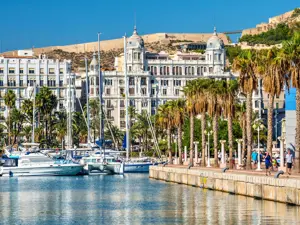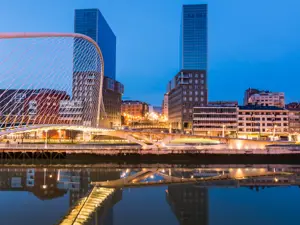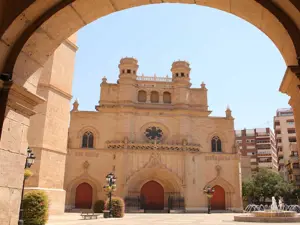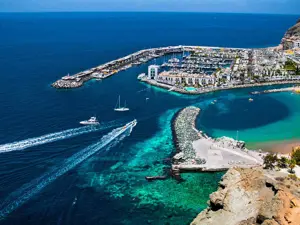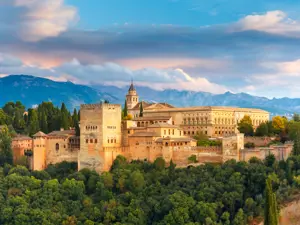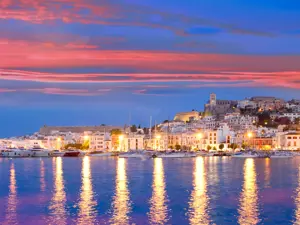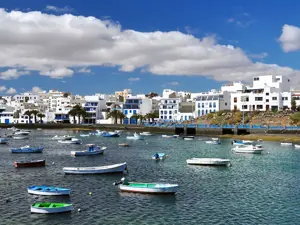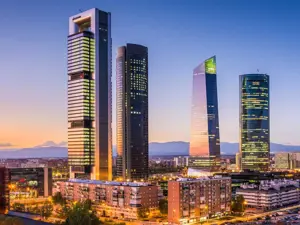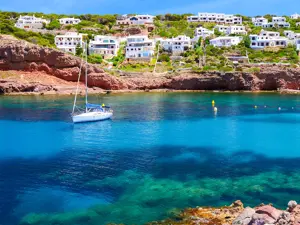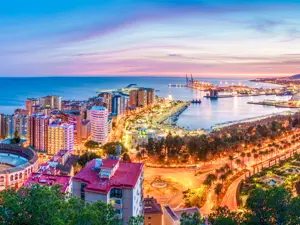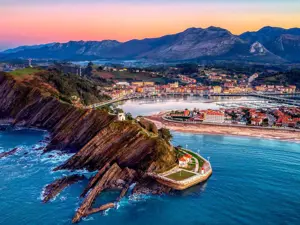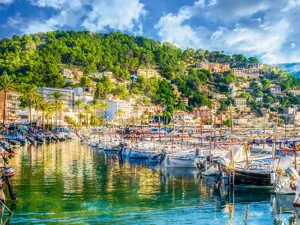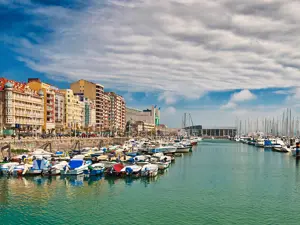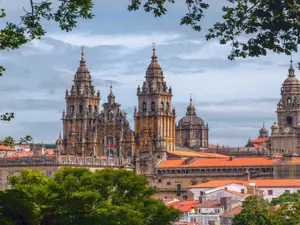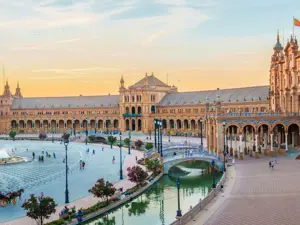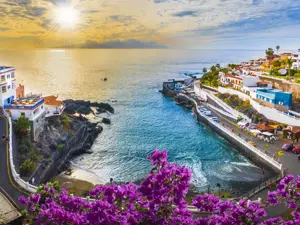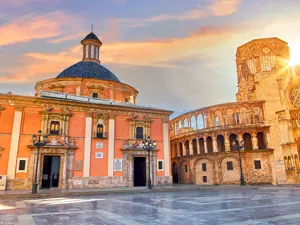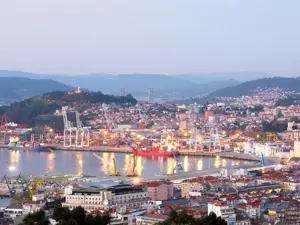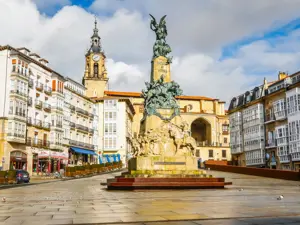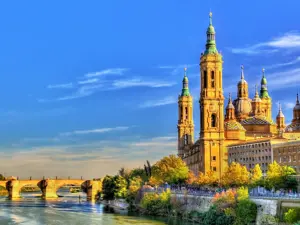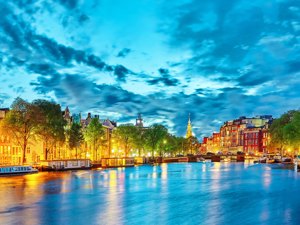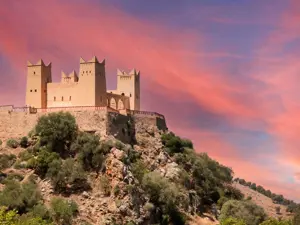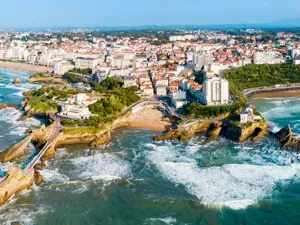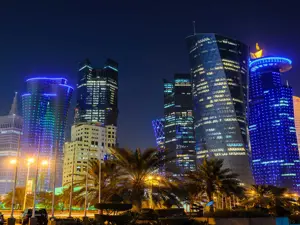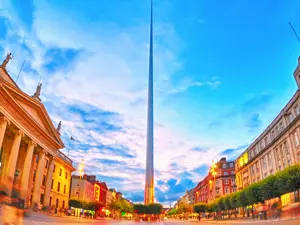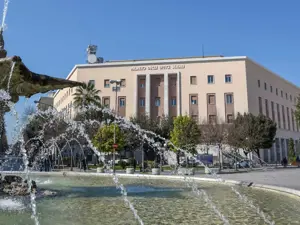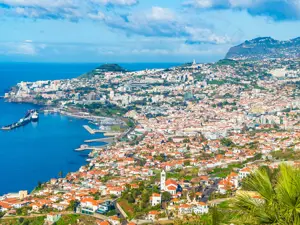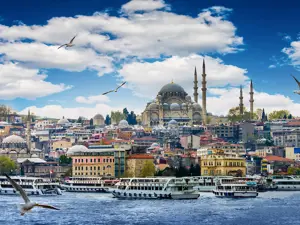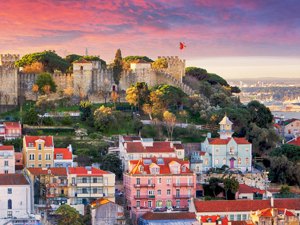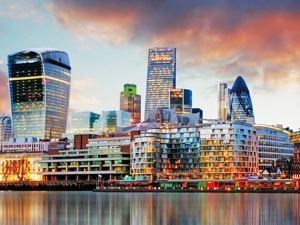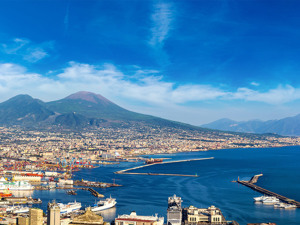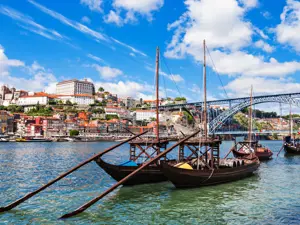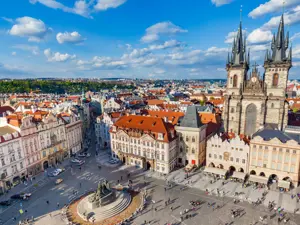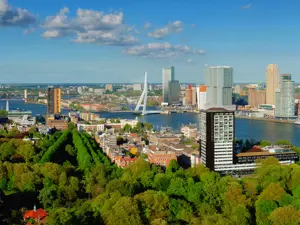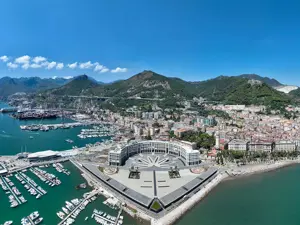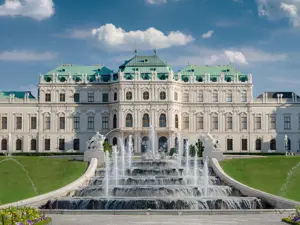City stop along the Camino de Santiago surrounded by Asturian paradise
Asturias, a region in the far north of Spain, is picturesque and unspoilt, a genuine natural paradise, which is extremely varied, being dotted with forests, mountains, steep cliffs as well as long white sandy beaches and fishermen’s villages with small ports that in the past served as refuges during storms or as quays for whalers.
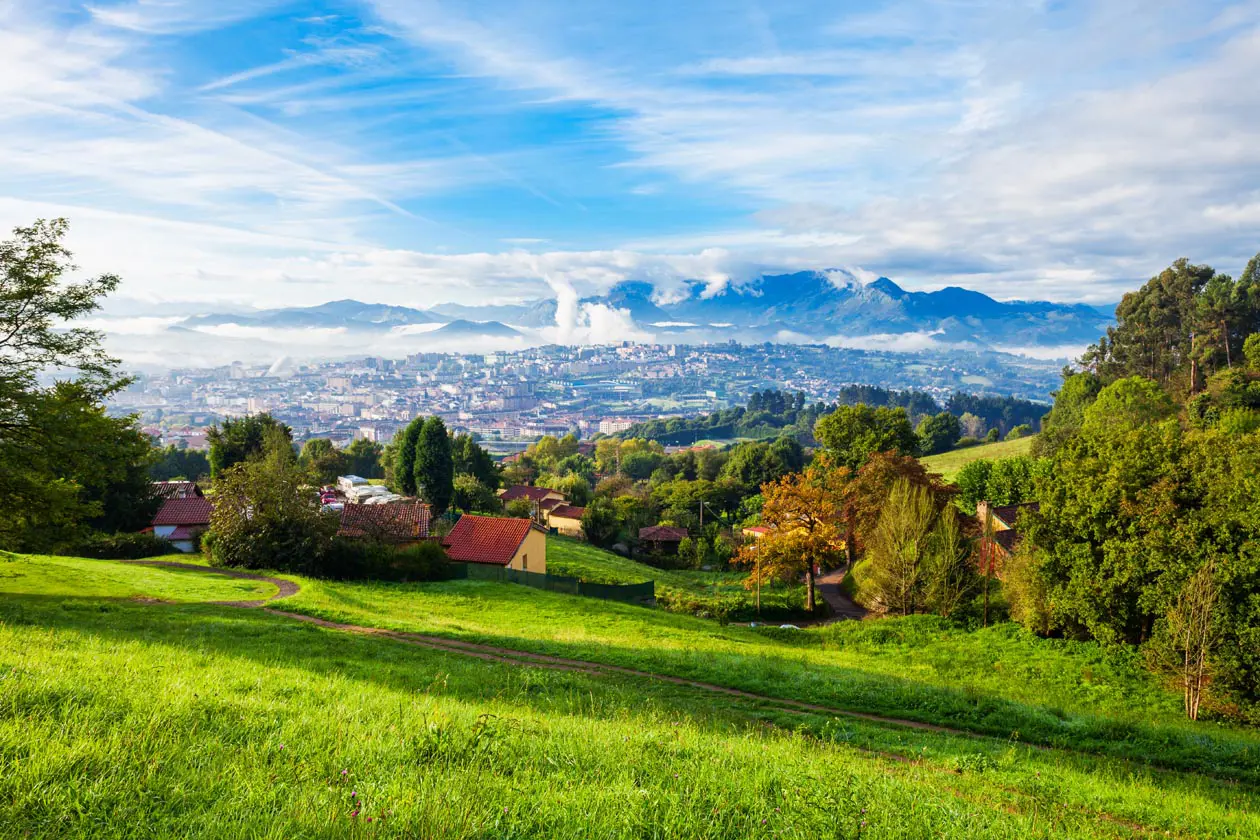
The chief town of what is in reality the Principality of Asturias - the heir to the Spanish throne still bears the title of Prince of Asturias - is Oviedo, which is served by the increasingly large numbers of tourists from the nearby airport of Oviedo. The city displays uniquely charming pre-Romanesque architecture, a mark left by the Asturian monarchy in the tenth century, the period in which Asturias was an autonomous kingdom.
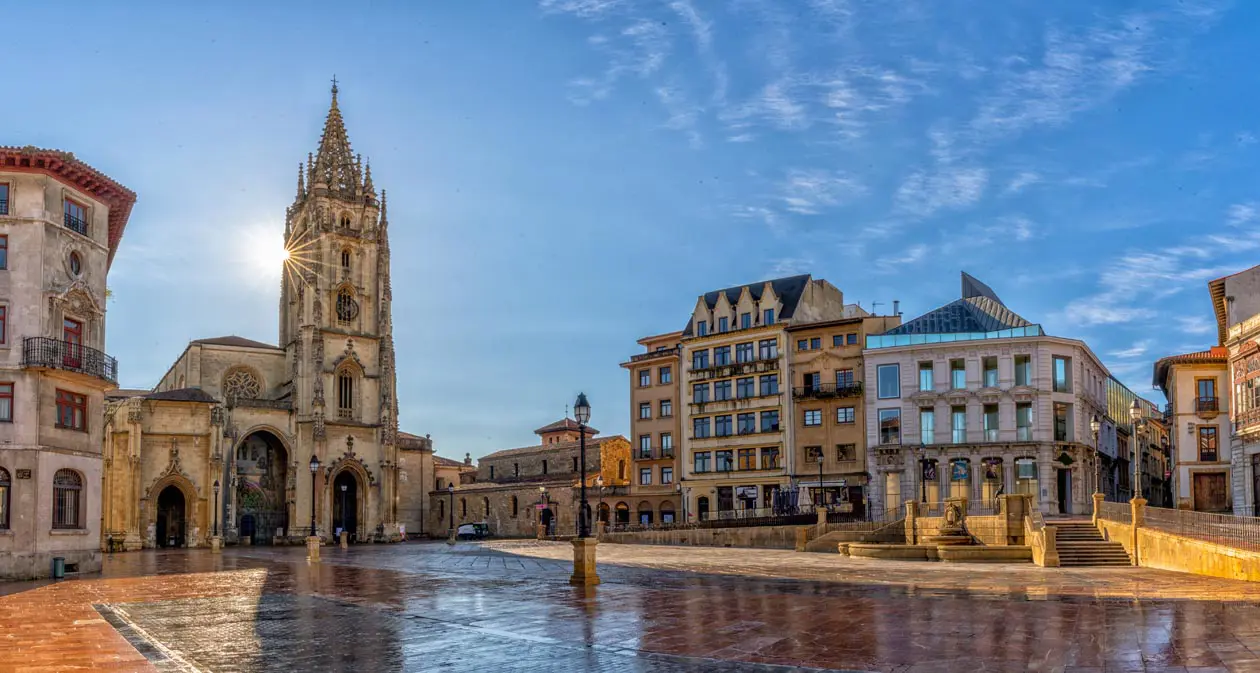
Oviedo. Editorial use photo: Copyright © Sisterscom.com / makasanaphoto / Depositphotos
One of the first things to see is the Foncalada Fountain, one of the oldest drinking water fountains in Europe and the only example of pre-Romanesque civil architecture on the continent. The historic building of the University of Oviedo stands in Calle San Francisco, and in the nearby Plaza de Porlier lies Palacio de Camposagrado which looks onto San Salvador Cathedral, a splendid building that is a rare example of Flamboyant Gothic style. It has preserved, since the tenth century, one of the symbols that is most dear to the inhabitants of Asturias, a symbol that dominates their coat of arms: the Cruz de la Victoria (Victory Cross), which is kept as a relic in the ‘Cámara Santa’ in remembrance of the victory of Covadonga against the Moors in 722 during the period of the ’Reconquista’ by the legendary King Pelagius with the miraculous intervention of the Virgin Mary.
The historic buildings of Oviedo
In the city, alongside these remains of a distance past, are the famous Museum of Fine Arts, which is full of important works, and the building of theUniversity. For lovers of music, there is the prestigious opera season that takes place each year in summer at the Campoamor Theatre, famous for being the place where the prizes of the Princess of Asturias, a sort of Spanish Nobel prize, are awarded.
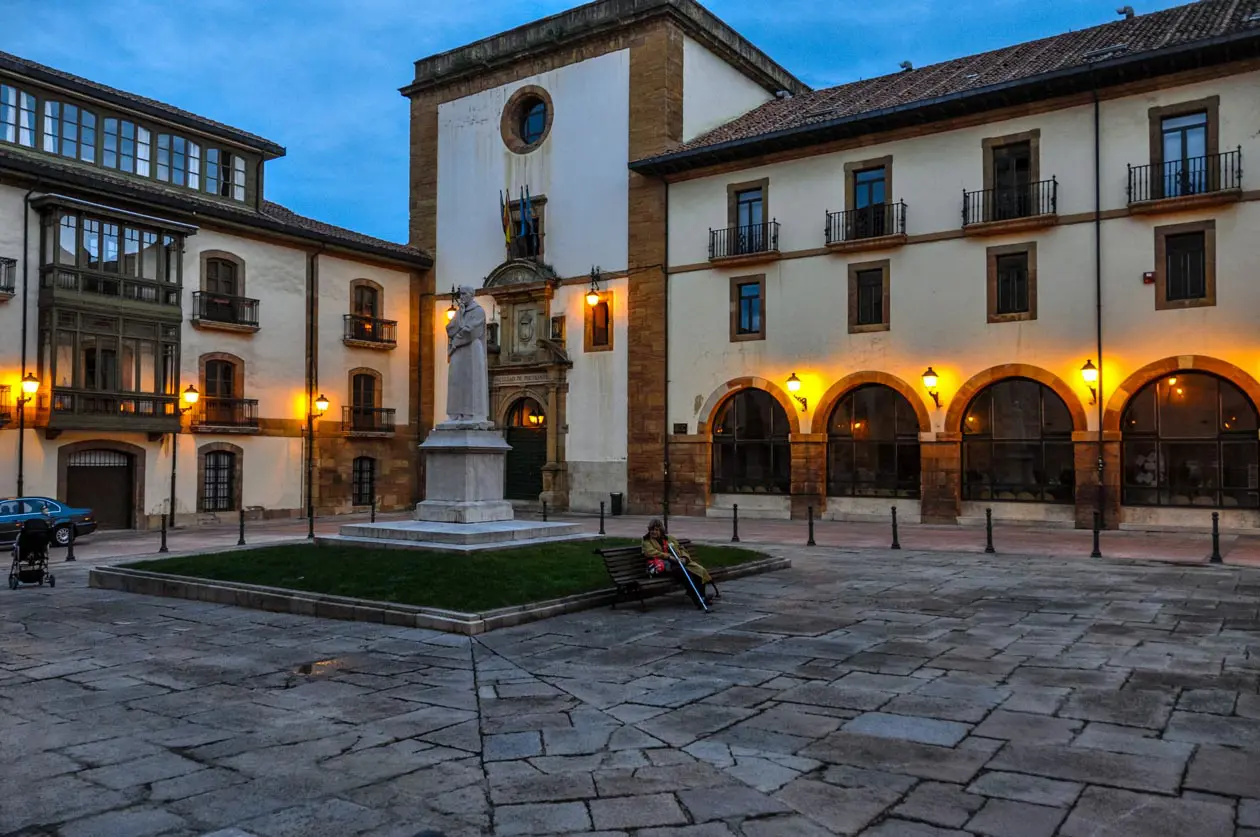
Virgin of Covadonga
Easily accessible from Oviedo is the Picos de Europa mountain, site of the cave where the Virgin of Covadonga is worshipped and the location of the battle. This simple cave has been a place of Marian pilgrimage for centuries. Nearby, in beautiful Romanesque style and with a splendid pink facade, is the Basilica de Santa Maria de Covadonga.
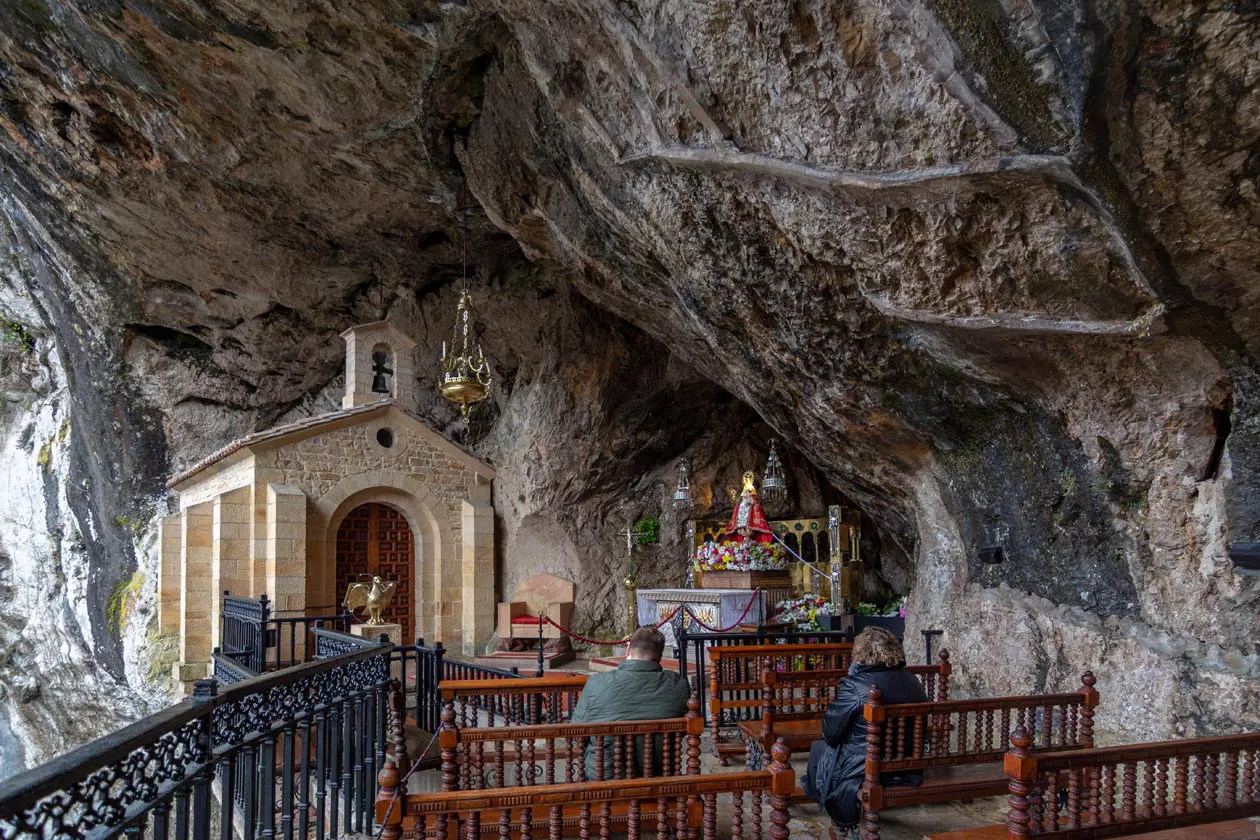
Oviedo: stage of the Camino de Santiago
Asturias is steeped in the old religious traditions of Spain, to the extent that in the beautiful Plaza Alfonso II a plaque on the flagged pavement states that the first Compostela pilgrimage departed from here in the tenth century. The pilgrimage was desired by King Alfonso after the discovery in Compostella of St. James’ tomb and the sovereign was the first pilgrim to pay homage to the Saint on foot. Oviedo still remains an important stage in the ‘Way of St. James’, a long route to be carried out on foot, which begins in the Pyrenees and ends in Compostela.
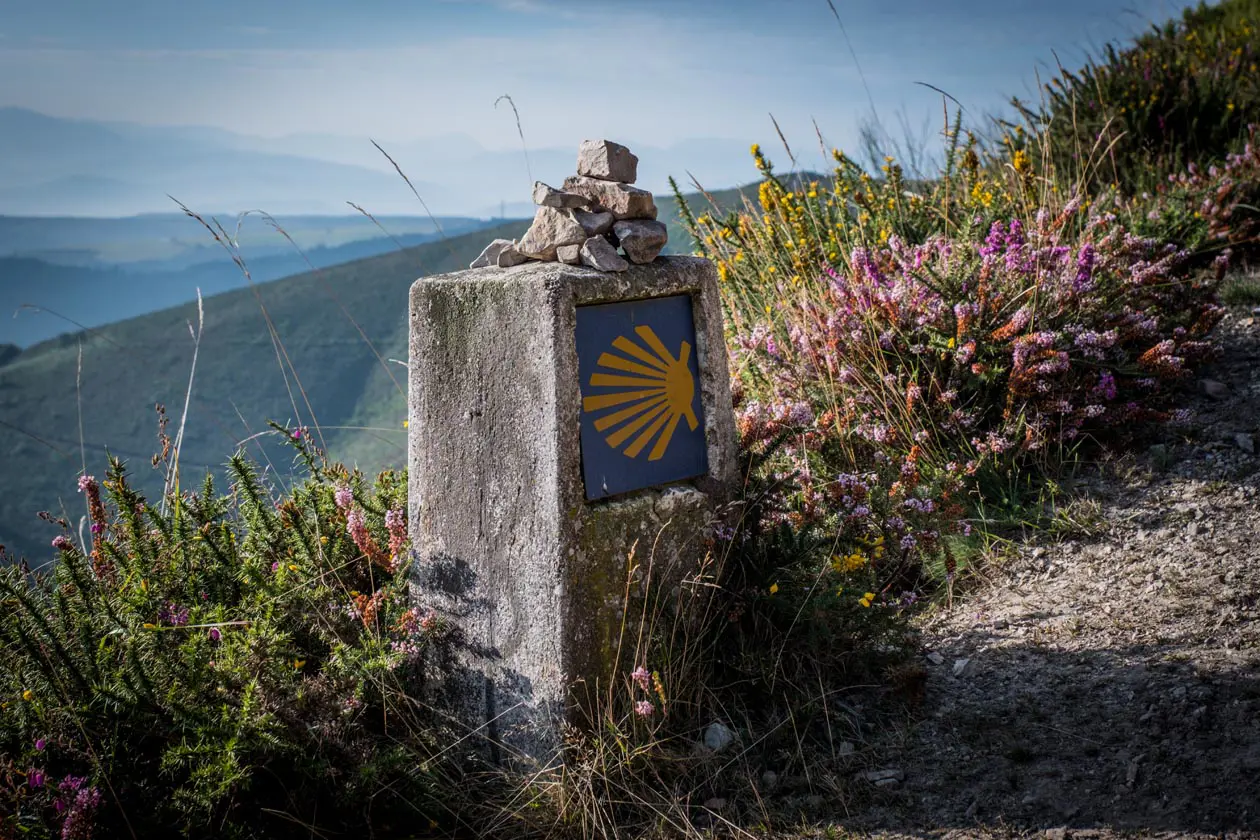
Way of St. James. Photo: Sisterscom.com, Shutterstock
The Asturias
Crossing Asturias is a unique experience: the roads wind along a lush, fertile valley, which since distant times has experienced great prosperity, not just due to farming, but also for the iron and coal mines and for the craft activities of a hard-working people, an activity that continues today to be expressed in the small traditional hand-crafted items such as baskets, sculptures, ceramics and wooden clogs (madreñas) similar to Dutch clogs. Ancient craft traditions are also seen in certain unique constructions such as the hórreos and cabazos, food and grain stores raised on pillars, and in the teitos, small houses with thatched roofs.
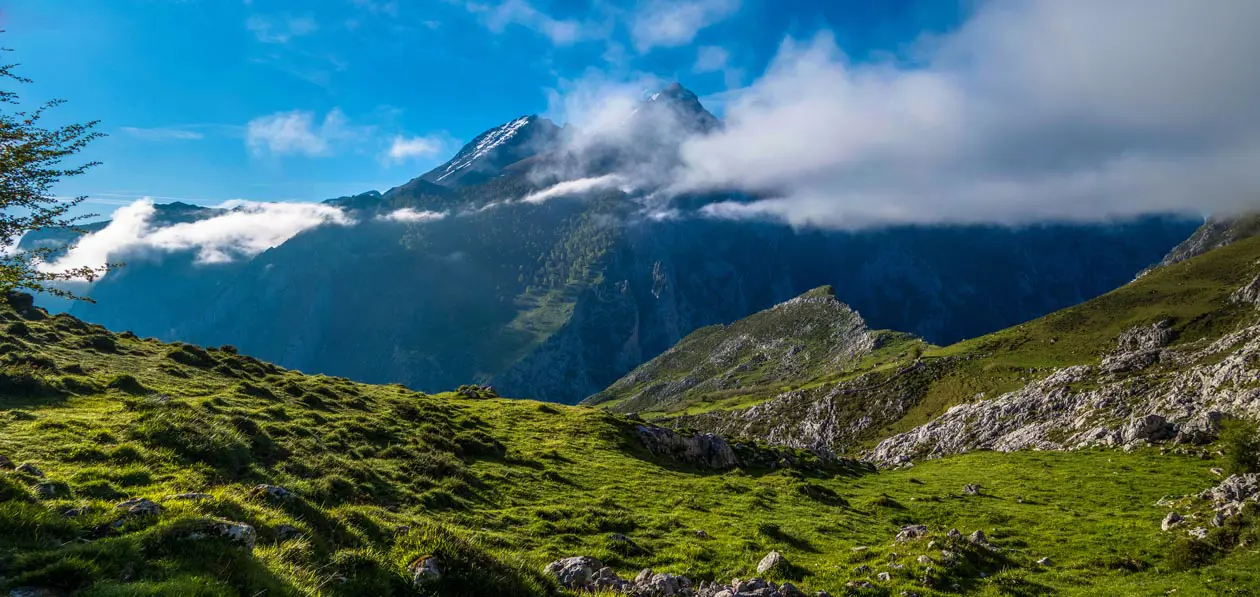
Asturias is inscribed on UNESCO’s World Heritage List, not just Oviedo, but also the rock art of the spectacular caves in the surroundings. Don’t miss the caves of Tito Bustillo, del Pindal in Ribadedeva, de la Peña in Candamo, de la Covaciella in Cabrales, Llonin in Peñamellera Alta. The caves are set among unspoilt landscapes of great beauty. A visit is well worth while to the National Park and Muniellos-Fuentes del Narcea, which has the largest oak forest in Spain and is the natural habitat of brown bears.
Gastronomic specialties of Oviedo
The region is attached to tradition even in its recipes, the most popular of which is the fabada, a flavoursome bean soup enriched with pieces of pork, a staple dish of the local cuisine; another ritual is drinking cider, a local drink made from apple juice, which is poured from a reasonable height - another ritual - to allow for greater oxygenation. Typical products and recipes can also be enjoyed at the festivals dedicated to gastronomy with Asturian culinary delights such as fabada or natural cider which is celebrated during the Preba De La Sidra festival, scheduled every year on 4 June from 12pm to 3pm in the via Gascona in Oviedo.
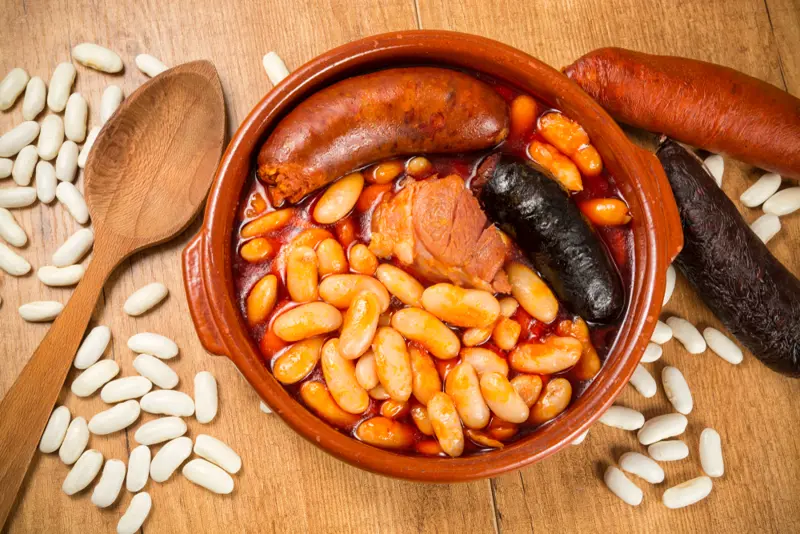
Fabada: Sisterscom.com, Shutterstock

Carbayones: Sisterscom.com, Shutterstock
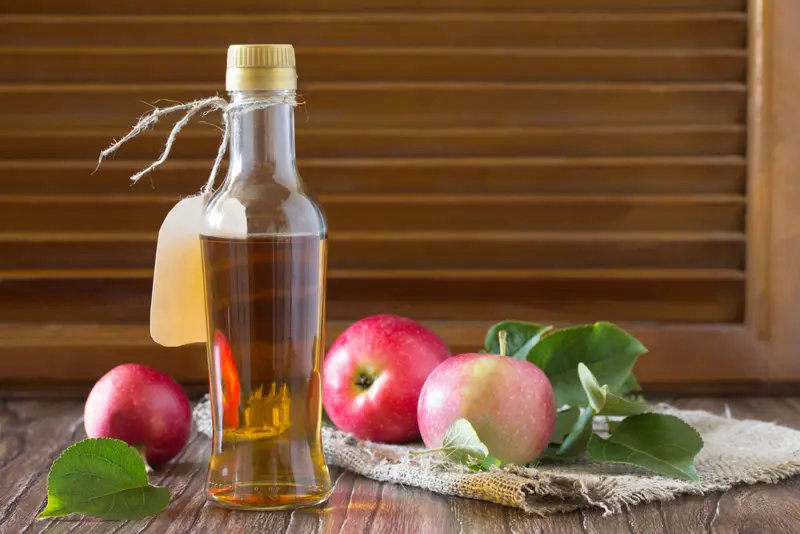
Apple cider: Sisterscom.com, Shutterstock
Text by Anna Glik
Updated by Alisè Vitri
All rights reserved.
Tourism board
www.turismoasturias.es
www.oviedo.es
Partnership with Booking.com
Where to sleep in Oviedo
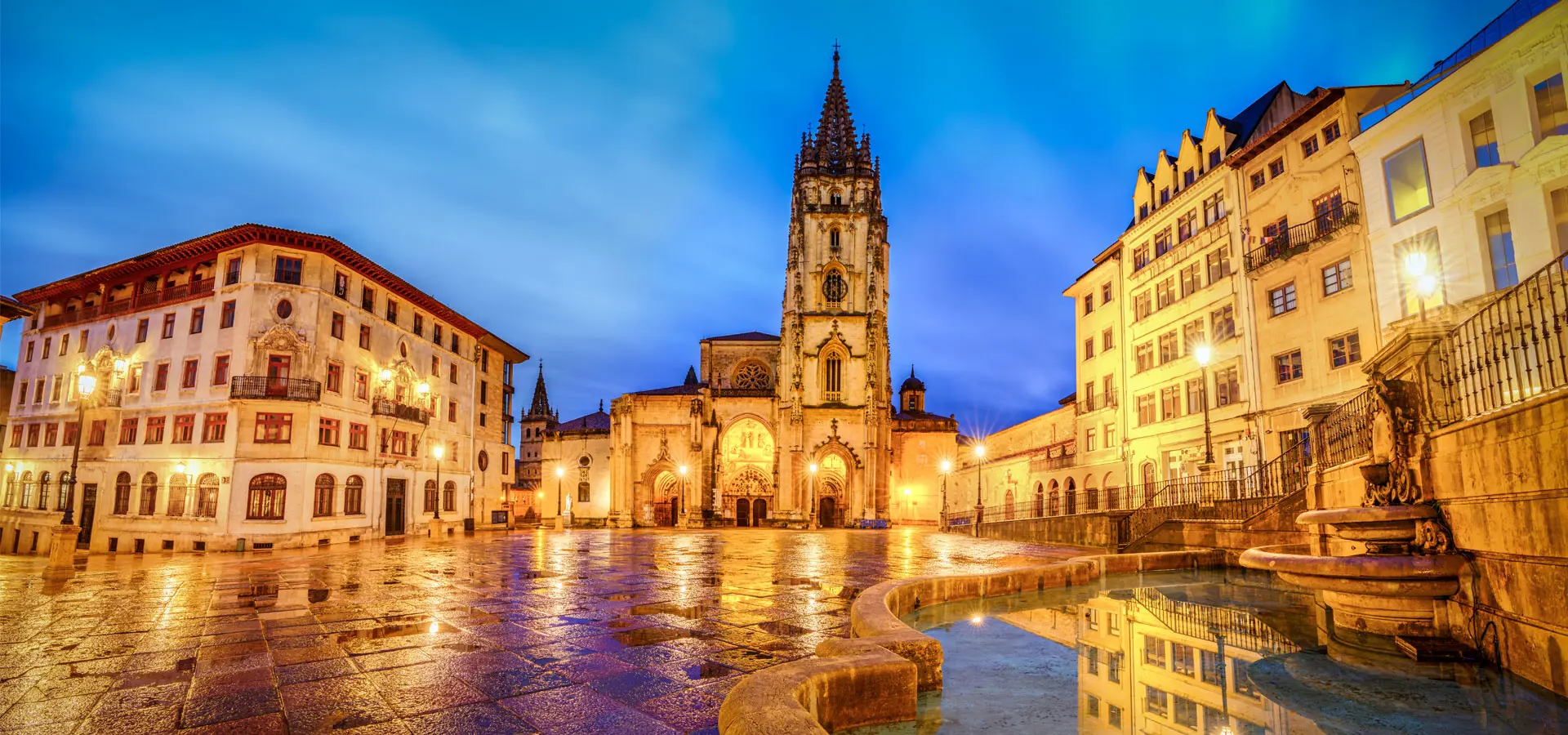
Oviedo. Photo: Sisterscom.com, Shutterstock
Oviedo is a welcoming city and offers different possibilities for accommodation.
To find the ideal hotel and the best offers you can do a search for the stars but also for districts or landmarks.
STARS
Hotels for stars, differentiated by type of services:
DISTRICTS
Hotels in the districts
LANDMARKS
Hotel in tourist areas
LANDMARKS
Hotel in tourist areas
AIRPORT
Hotels near the airport
HOTEL NEARBY
where to go in oviedo
Monuments in Oviedo
CASA DE LA RUA
Situated in front of the Cathedral, this old house is the oldest civil building in the city, being untouched by the fire that in 1521 destroyed a large part of the old town. Today it is called Ruaquince and is the lively site of conventions, concerts and cultural events.
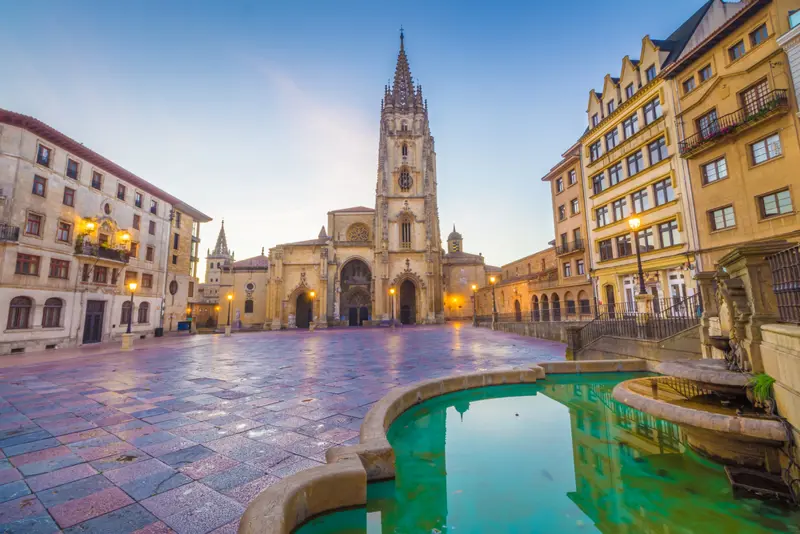
CATHEDRAL DEDICATED TO SAN SALVADOR
The cathedral, built between the fourteenth and sixteenth centuries in Flamboyant Gothic style, contains the ‘Càmara Santa’, Oviedo’s symbolic chapel, which was commissioned by King Alfonso II in 791. Together with the statues of Christ and the Apostles, it is a treasure of the cathedral and was declared a UNESCO World Heritage Site. This “Holy Chamber” preserves one of the objects of worship of the Asturians, the Victoria Cross, which is displayed on the blue background of the flag of Asturias. This large place of worship also houses the tombs of the kings of Asturias and the Holy Ark, which contains the Sudarium or Shroud of Oviedo, a linen cloth that according to tradition was wrapped around the body of Christ after his death. The Cloister houses the Diocesan Museum with splendid crosses, chalices and Romanesque statues.
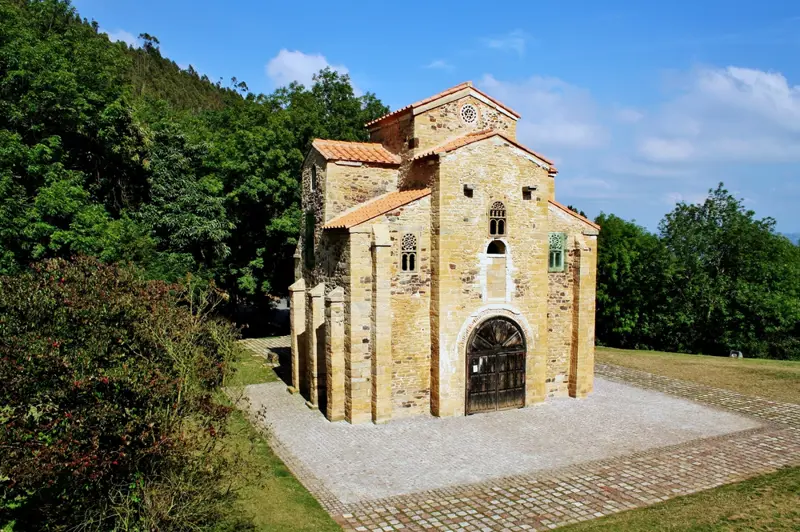
SAN MIGUEL DE LILLO
This was commissioned by King Ramiro I as a private chapel to worship the Angel Gabriel to whom he was devoted. It is a beautiful example of the pre-Romanesque style.
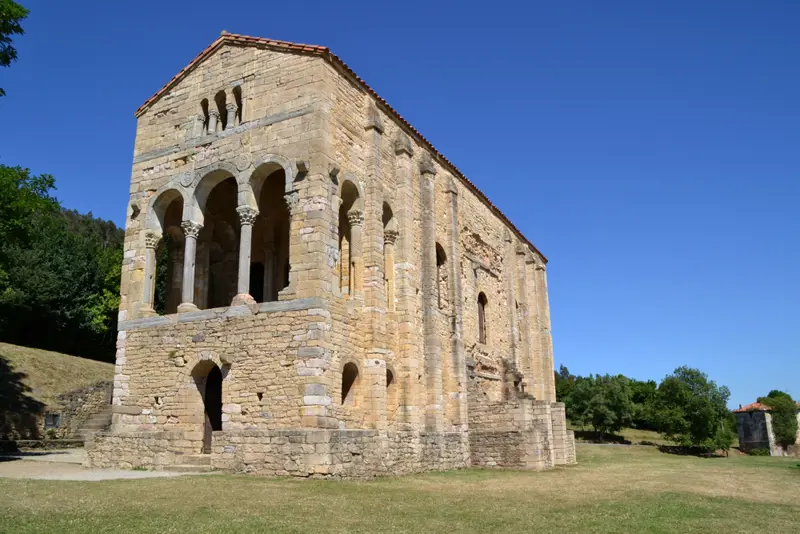
Photos: Sisterscom.com, Shutterstock
SANTA MARIA DEL NARANCO
Once the residence of King Ramiro I of Asturias, it was later transformed into a church. Situated at the foot of Mount Naranco, this unique pre-Romanesque building has two floors. The crypt has barrel-vaulted ceilings, divided into five parts.
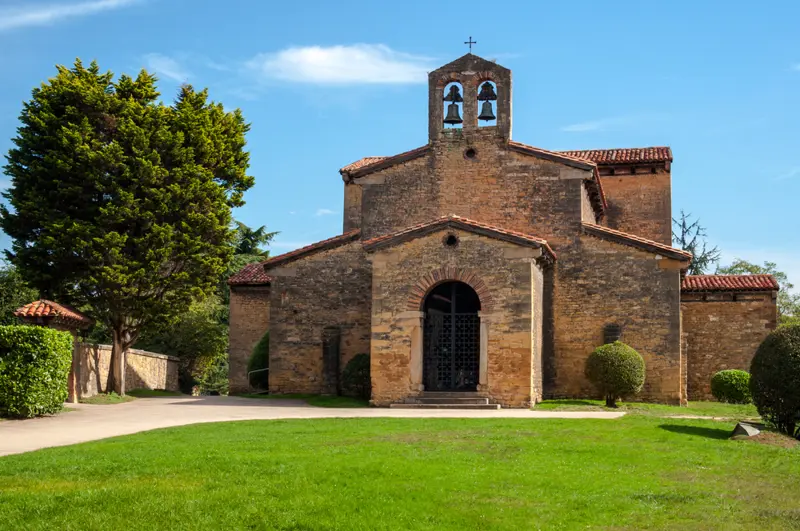
SAN JULIAN DE LOS PRADOS
Known also by the name of Santullano, this beautiful pre-Romanesque church was, until the eleventh century, the largest Christian construction in Spain. It is found in Pumarìn, an outlying suburb of Oviedo, and is appreciated for its wall paintings, which are filled with brightly coloured symbols and geometric figures.
Museums in Oviedo
ARCHAEOLOGY MUSEUM
This museum occupies a part of the Monastery of San Vicente, inside a Plateresque cloister (fifteenth century), and contains valuable items dating back to very ancient periods such as the Palaeolithic and the Ages of the metals. The Vega del Ciego mosaic of the Roman era is extremely interesting.
MUSEUM OF FINE ARTS
With its 8,000 works, this is the largest museum of Asturias. It houses collections of Spanish, Italian and Flemish paintings, as well as sculptures, drawings, engravings, applied and industrial arts from the medieval period to the twentieth century.
Excursions in Oviedo
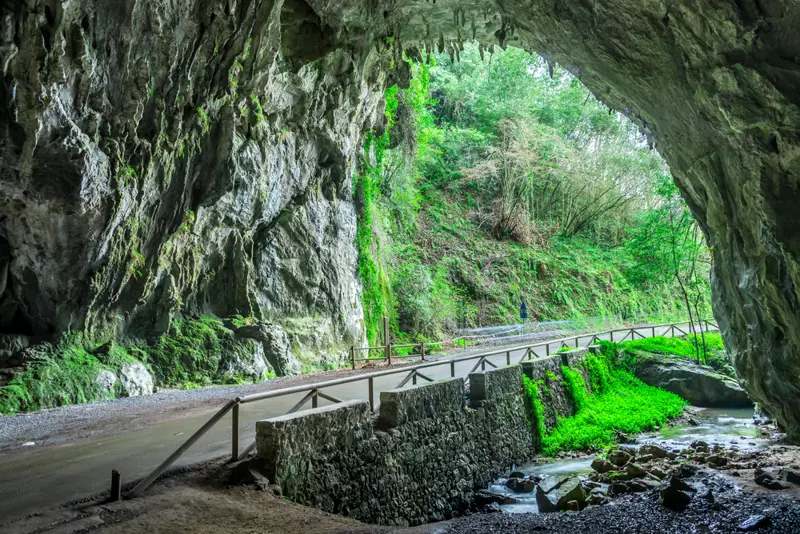
CAVES OF TITO BUSTILLO IN RIBADESELLA
Known as the cave paradise of Asturias, the caves of Tito Bustillo in Ribadesella are well worth visiting. The rock art, dating from 25,000 to 10,000 BC, depict deer, horses and shapely female figures in vivid colours as if they were painted recently. The Cuevona de Ardines, with a height of 40 metres, offers depictions of prehistoric fish with realistic dimensions larger that the fishes of today.
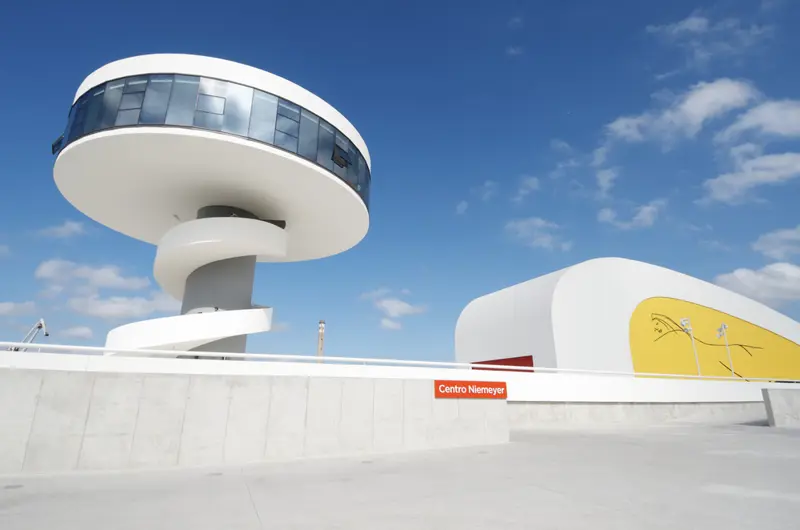
Worth visiting in Avilés, a town near to Oviedo, is the Centro Oscar Niemeyer. The Centre, which takes the name of the Brazilian architect Oscar Niemeyer, is of global importance and is very active in organising exhibitions, theatre performances, dance events, musical concerts and conferences. It consists of various sectors, including the Auditorium, the Dome and the sight-seeing Tower, which has a height of 20 metres and from which a complete view of the city can be enjoyed sitting in the seats of the excellent restaurants.
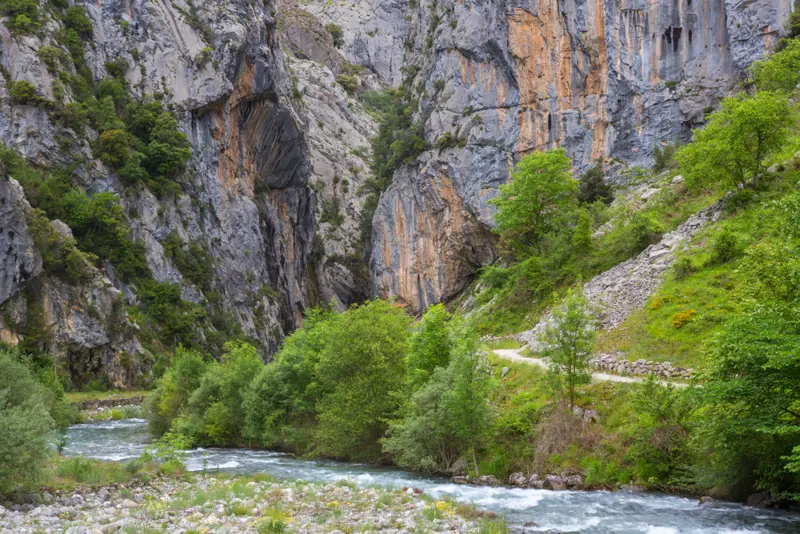
Photos: Sisterscom.com, Shutterstock
PICOS DE EUROPA
This was the first National Park of Spain, dating back to 1918, which has been declared a UNESCO Biosphere Reserve. High peaks alternate with deep gorges and impressive canyons. The most extensive massif is the Western massif with the spectacular Lake Covadonga. There are well-signed paths for anyone wishing to go hiking or mountain biking.
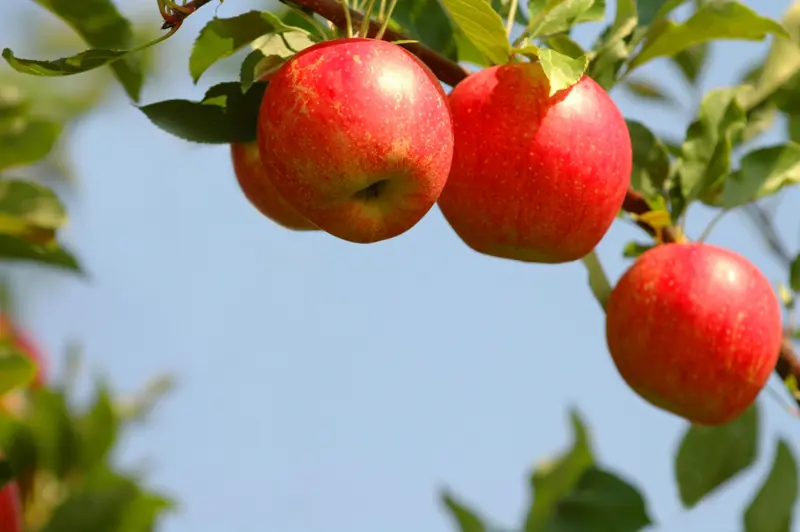
Photos: Sisterscom.com, Shutterstock
CIDER MUSEUM IN NAVA
This interesting museum illustrates the stages of production of the local Asturian drink made from apple juice and the secrets of cider. The museum is arranged in four rooms and, among these, one is devoted to the cultivation of apples and another to their processing.
Partnership with GetYourGuide
Discover all tours
News & Useful info
You might be interested in
Other destinations
Airports nearby Oviedo


